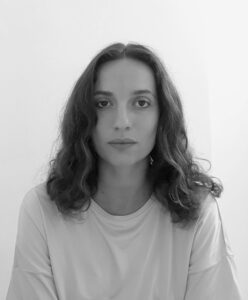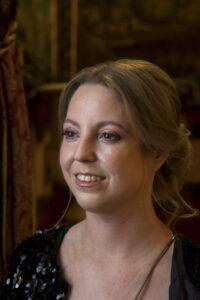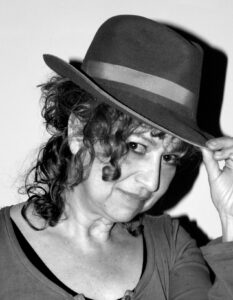Abi Shehu
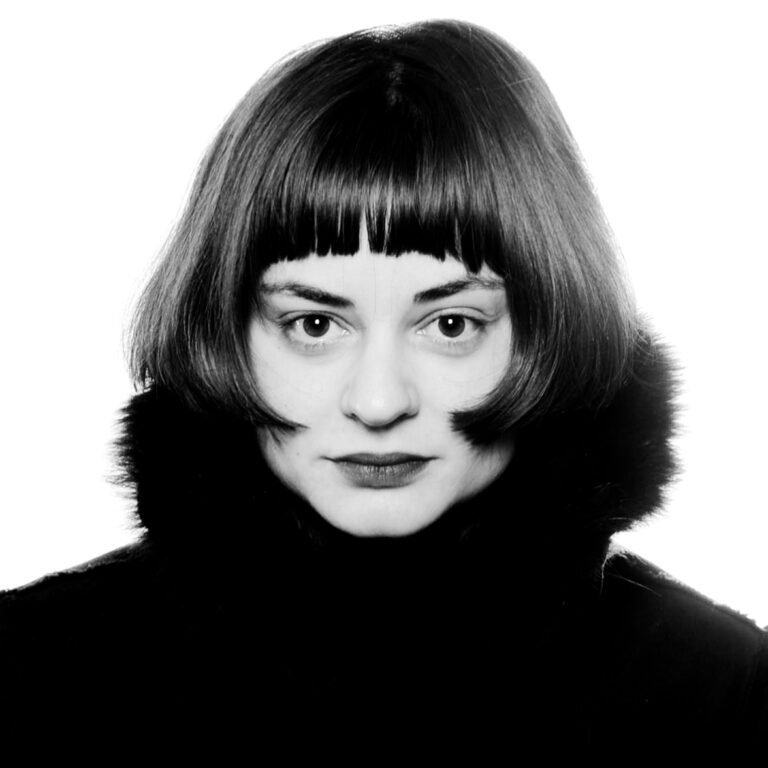
- analog photography
- black and white
- body
- death
- documentary
- everyday
- existential
- family
- floral
- history
- human
- human being
- individual memory
- landscape
- language
- life
- light
- literature
- loss
- memory
- memory research
- mountains
- movement
- mythology
- myths
- narration
- narrative
- nature
- ordinary
- photography
- poetry
- province
- real
- realism
- reality
- remembrance
- rivers
- social
- sound
- spirituality
- storytelling
- subconscious
- symbolism
- time
- transcendence
- uncanny
- unconscious
- Unconsciousness
- universal issues
- Videoart
- visual poetry
– born 1993 in Lezhë, Albania. She is a visual artist working with the medium of photography, video, sound and installation currently living between Albania and Germany. She studied architecture in Tirana and then later Photography at the University of Applied Science Europe in Berlin.
My work is a condensed esthetical research on the fundamental existential experiences that create a portrait of humanness in contemporary societies: unconsciousness, death rituals, memory, and amnesia. My artistic research can be duly characterized as an archeology of unconsciousness. Nowadays, throughout an intersection of visual and media art, installation, and sound art I recreate the transparent unconscious landscapes that are the constitutive unrepresentable dimensions of people, societies, places, and of historical events.
Initially, my photographic work mainly revolved around the nature of human relationships towards themselves, while I tried to feature their character through a visual search into spaces. Portrayed through mirrors, as a way to clone oneself – another window, therefore, another space, Affection (2018-2019)123 was the first photographic series focused on personas, reflections, and contemplations. Subsequently, Affection was exhibited at Marubi Museum and the Art House, as part of a group show “Seven Albanian Photographers. A residency” curated by François Cheval, which resulted from the end of an art residency at Shkodra Art House titled “Beyond the Image” (2019-2020).
Henceforth, initiated by the rituals of death, portrayal through photography took another form, portraying in the absence of human presence. Lulembramet or Death-flowers (2021)456, artificial and colorful enough to convey the feeling of eternity, ironically stand at the exact place where someone’s life has tragically ended. Precisely these flowers conveyed to me the feeling of the representation of the deceased, hence I treated them as their last portrait. Lulembramet baptizes the attempt to produce throughout the image a visual journey of tragic deaths. Either by a car accident or by an unfortunate encounter, some people have lost their lives abruptly on dead-end corners, making the most unlikely places sites of a symbolic transaction between life and death. Death-flowers commemorate that brief instant when life touches the cutting edge of death. They are the symbols of a double impossibility: the impossibility of the one who dies to utter the last word and of the one who mourns, to give the last goodbye. Death-flowers are the unuttered words of untestamented deaths. When a death occurs without its warning signs, when a person dies without testimony, society must return the identity of the last moment in the form of a memorial gesture. This gesture is an attempt to represent the unrepresentable. When truth cannot be spoken, it must be felt. Death-flowers are the marks of losses without redemption. They signify the unuttered goodbyes to a body that does not rest where its soul departed. Initially, Lulembramet was exhibited as a duo show entitled “Necrography” in collaboration with Gerta Xhaferaj at Basament Art Space, in Tirana (2021). Transferring it later to my Open Studio at Grand Hotel, Manifesta Biennial, (13.09.2022 – 18.09.2022). Moreover, Lulembramet has been exhibited in the Idromeno Award at the Gallery of Arts of Shkodra (2021).
In 2020, inspired by my grandfather’s stories about his native village, Lura, for the first time, I took the initiative to work in a film installation, based on the mountain in front of the village, which to this day is used as an indicator of time by the inhabitants. Divided into two screens, one of them displays the light-shadow of the mountain used as a sun clock, shot from sunrise to sunset, to later compress it in time-lapse. On the second screen, documentation of the daily routine of the inhabitants are displayed throughout the day. The reason why these inhabitants give and find time through the mountain (the mountain itself is timeless), is their livelihood through livestock and agriculture. It also relates to an adaptation poem by Martin Camaj, referring to a treeless mountain. The Red Rock (2020)7891011 breaks Lura’s mourning silence about its past. Lura is known as one of the most beautiful National Parks in Albania, which transformed into an unforgettable moment in the series of ecological disasters in the country over the last 30 years. Its former beauty is nailed in people’s memory. The eyes cannot be hidden under Lura’s felled oaks, but behind the lens of a camera, daring to take a look at what is left. There is the Red Rock standing, the millennial rock where the passing of light and shadows form a natural clock for the inhabitants. Time carved in stones with light and darkness presents itself as immovable in its presence, irreversible in its flow. The film seeks to produce some new frames where it harbors a warm nostalgia for Lura. It expresses a desire to touch Lura, to feel the pulse of new life that beats under the clothes of poor peasants and old ruins. The camera penetrates through Lura in search of the senses required to perceive it. The eye of the camera becomes sometimes the sharp gaze of a young girl, sometimes the humble gaze of two elderly persons. Aren’t the little hands milking the cow the limbs with which we can touch Lura? The erratic movement of sheep and goats gives us the right footing to traverse its rough terrain. There is an attempt to become a screen that seeks to record a cinematic existence of Lura, beyond the ecocide. Lura remains one of the rural areas of Albania, where every fundamental piece of social infrastructure, such as streets, institutions, or networks is lacking.
The Red Rock has been exhibited at EMOP, Berlin (2020), at Kino Rinia, Pristina (2020) as a result of an art residency at Fondacioni 17, at Bazament Art Space, Tirana (2021), and Manifesta 14 Pristina (2022).
By exploring amnesia, one of my works relates to Spaç political prison, during Communist Albania. At present lost in oblivion, even though it is a monument of cultural heritage. Saharaja (2021)121314, entitled after the poem of Vilson Blloshmi who was convicted and executed at Spaç prison precisely for this poem, is a video installation consisting of 15 old television sets, stacked on top of each other in three rows, each one is displaying on the screen a recurring animation. The animations stem from photographic images of graffiti (drawings, writings, signs) found on the walls of the ruins of the infamous former prison and labor camp, Spaҫ (1968-1990). In poor physical condition due to lack of preservation, Spaҫ’s graffiti, is represented as an almost archeological object documented by photography. They are indeed precious evidence of the history of buildings and the existence of people who suffered inside them. Although the graffiti seems to belong to the last years of the prison (1987-1990) and the origins cannot be verified formally, they manage to convey a kind of existential aura and introduce us to the psyche and imagination of the prisoner inside that prison, known for cruel conditions and extreme brutality. The aesthetics of this graffiti, apart from the historical and anthropological value that the building of the former Spaҫ prison carries, does not stand outside the aesthetics of public graffiti, commonly found in 1980-90, in schools, dormitories, barracks, factories, described by Foucault as corresponding to the regime of the closed and organized environment (where the prison is the most extreme environment) in the function of production. This environment evokes rejection, resistance, and avoidance. It is no coincidence that these images are mostly banal television stereotypes and revolve around sex, advertising, sports, foreign cinema, dangerous enemies of discipline, and the official ideology of the political regime. Not coincidentally, we see among the graffiti, television sets, as the only windows from which they could be reached by the Albanians of those years. This is the reason I use old television sets, objects, cherished by Albanians, in the years we are talking about. Instead of looking at these screens displaying foreign channels, often observed illegally in Albania in those years, we see the reflection of the viewer or a glimpse into the minds of imprisoned locals. Meanwhile, the animation or the animating graffiti, which nonetheless is a kind of anxious convulsion, reminds us that they are still there, trying to shake us up a little and turn our gaze toward them. Saharaja has been exhibited at Zeta Gallery during Ardhje Award for Young Artists, Tirana (2021) and at Manifesta 14 Pristina (2022).
As a member of Women in Covid, “In Waves” exhibition where 24 Berlin photographers provide personal, diverse, and unique insights into the reality of women, trans* and non-binary people during the Covid 19 pandemic, I have presented a photograph entitled Floçka (2021)151617as the name of the mystical nymph of Albanian legend. She represents death as the essence of life itself. The photograph aims to create a contrast to the contemporary representations of death. People have elevated life to an absolute value above all else, banished death, and thus lost the ability to confront their own mortality.
“In Waves” is an ongoing project which until now has been shown as an outsider exhibition at Köpenicker Str. 70, Berlin (2021), at Leuphana University of Lüneburg (2022), at Telliskivi Creative City, Tallinn, Estonia (2022) and at Kulturkirche St. Stephani, Bremen (2022).
Currently, I am holding an art residency at Manifesta 14 Prishtina, where I am pursuing a new line of artistic research around the city’s missing river, which was covered in the 1970s. Its absence is still keenly felt today. The main focus of this work lies in tracking down the bed of the Prishtevka River through a sound installation created by placing waterproof microphones inside points of the river. These underground microphones are meant to be connected to megaphones displayed on the surface so that the noise of the flow of the buried river is transmitted live in different areas of the city. The selection of the sites for the microphone implantation under the pipes will be undertaken strategically at 3-5 points where the river comes closer to the surface in such a way that makes the intervention possible. The aim is to rely on the expressive materiality of acoustics in order to produce a form of the aesthetic (sensorial) awakening of the community, to restore the tonality of a flow that has been denied. Bringing the river to the ground is the conceptual movement that puts the underground above the surface and provides the listeners with a new awareness of the city. The other element of the installation of this work are the iron structures, approximately 2.5m in height above the surface, designed to be placed precisely on the sites where the microphones will be installed, by holding them inside the speakers so that the sound of the flow of the river springs through them. These structures will be imitations of the forms of vegetal life that once blossomed along the course of the river Prishtina. Inspired by the artist Karl Blossfeld and his book “Art Forms In The Plant World”, I want to convey the fundamental message that nature is the ultimate source of aesthetic forms and that its destruction undermines the community’s relationship not only with beauty but also with life itself.
During the residence, in addition to the work on the river, I created several different events, including HUNITI GOLDOX – Screening and conversation on landscapes in transition, at Abi Shehu Open Studio, Abi Shehu & Gerta Xhaferaj “Nekrografi / Necrography” and the workshop of OAZA’s Film Photography Programme in collaboration with Abi Shehu’s Open Studio, where the project entails a series of workshops on the production of analog photography (04.11.2022 – 21.11.2022).
Statement written by the artist in consultation with Adela Demetja (2022).
1Image: Abi Shehu, Affections, 2018-2019, Photography, Courtesy of the artist.2Image: Abi Shehu, Affections, 2018-2019, Digital Photography, Courtesy of the artist.
3Image: Abi Shehu, Affections, 2018-2019, Digital Photography, Courtesy of the artist.
4Image: Abi Shehu, Lulembramet or Death-flowers, 2021, 40 photographs as the 40th day of death, Courtesy of the artist.
5Image: Abi Shehu, Lulembramet or Death-flowers, 2021, 40 photographs as the 40th day of death, Courtesy of the artist.
6Image: Abi Shehu, Lulembramet or Death-flowers, 2021, 40 photographs as the 40th day of death, Courtesy of the artist.
7Image: Abi Shehu, The Red Rock, 2020, Two channel video installation, Lurë, Albania, Courtesy of the artist, photo Majlinda Hoxha.
8Image: Abi Shehu, The Red Rock, 2020, Two channel video installation, Lurë, Albania, Courtesy of the artist.
9Image: Abi Shehu, The Red Rock, 2020, Two channel video installation, Lurë, Albania, Courtesy of the artist.
10Image: Abi Shehu, The Red Rock, 2020, Two channel video instalacion, Lurë, Albania, Courtesy of the artist.
11Image: Abi Shehu, The Red Rock, 2020, Two channel video installation, Lurë, Albania, Courtesy of the artist.
12Image: Abi Shehu, Saharaja, 2021, video installation, twelve animations, 12” tube monitors 4:3, Courtesy of the artist.
13Image: Abi Shehu, Saharaja, 2021, video installation, twelve animations, 12” tube monitors 4:3, photo Majlinda Hoxha, Courtesy of the artist.
14Image: Abi Shehu, Saharaja, 2021, video installation, twelve animations, 12” tube monitors 4:3, Courtesy of the artist.
15Image: Abi Shehu, Floçka, 2021, Floçka, digital photography, Courtesy of the artist.
16Image: Abi Shehu, Floçka, 2021, Floçka, digital photography, Courtesy of the artist.
17Image: Abi Shehu, Floçka, 2021, Floçka, digital photography, Courtesy of the artist.
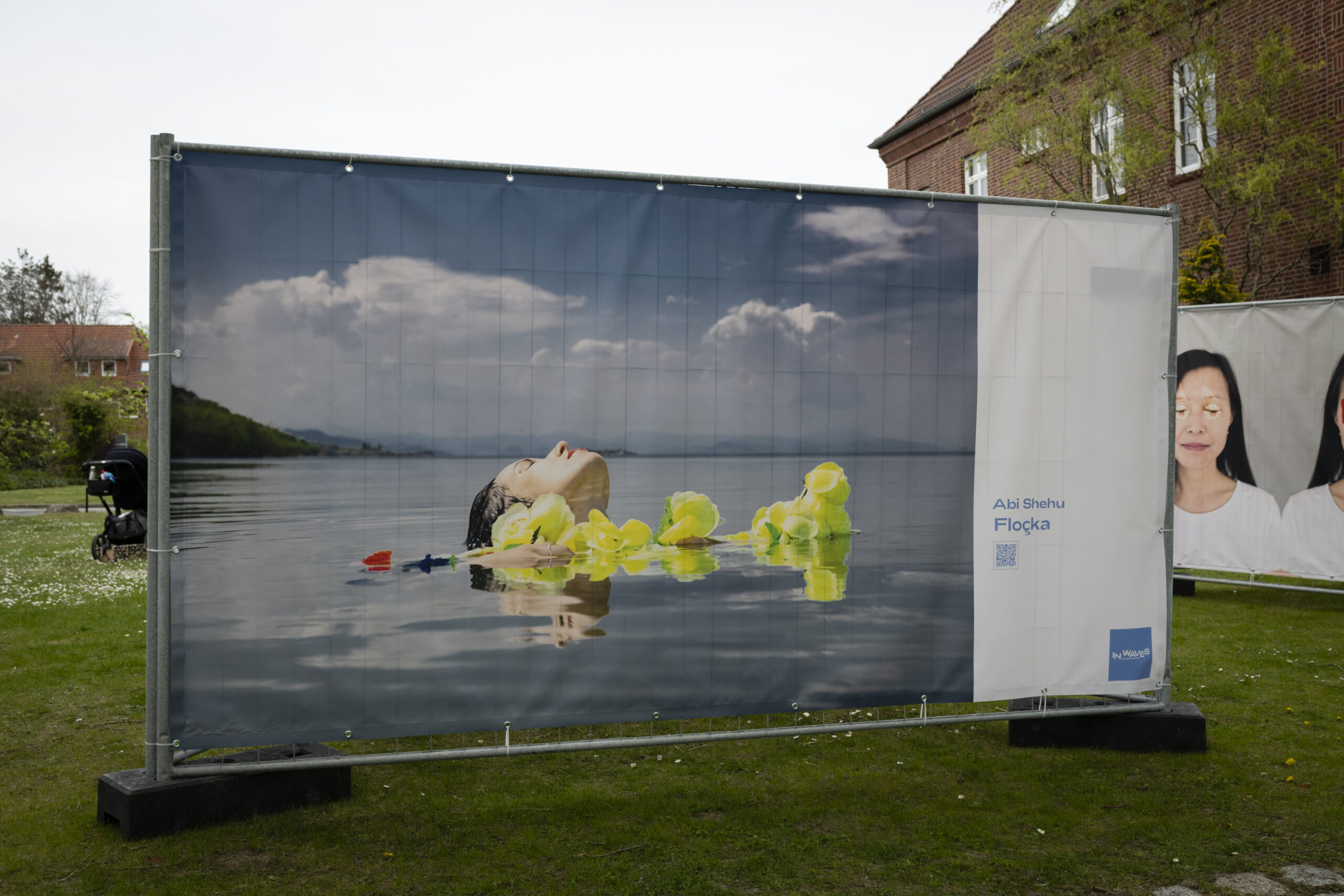
– lindur më 1993 në Lezhë, Shqipëri. Ajo punon me mediumin e fotografisë, videos, artit zanor dhe instalacionit që aktualisht jeton midis Shqipërisë dhe Gjermanisë. Ajo ka studiuar arkitekturë në Tiranë dhe më pas për Fotografi në Universitetin e Shkencave të Aplikuara Europe në Berlin.
Puna ime përvijon një kërkim estetik të kondensuar mbi përvojat themelore ekzistenciale prej nga dalin portrete të njerëzores në shoqëritë bashkëkohore: e pavetëdijshmja, ritualet mortore, kujtesa dhe amnezia. Hulumtimi im artistik mund të karakterizohet në thelb si një arkeologji e të pavetëdijshmes. Në ditët e sotme, përgjatë një nyjëtimi të artit vizual dhe mediatik, instalacionit dhe artit zanor, po punoj me rikrijimin e peizazheve transparente të pavetëdijshme që janë dimensionet kushtetuese të papërfaqësueshme të njerëzve, shoqërive, vendeve dhe ngjarjeve historike.
Në fillime, puna ime fotografike sillej kryesisht rreth natyrës së marrëdhënieve njerëzore ndaj vetvetes, teksa përpiqesha të shfaqja karakterin e tyre përmes kërkimit vizual në hapësira. Afeksioni, i paraqitur përmes pasqyrave, si një mënyrë për të klonuar vetveten, – një dritare tjetër, pra një hapësirë tjetër – ishte seria e parë fotografike e fokusuar në persona, reflektime dhe soditje. Më pas, Affection123 u ekspozua në Muzeun Marubi dhe në Art House, si pjesë e një ekspozite në grup “Shtatë fotografë shqiptarë. Një rezidencë” e kuruar nga François Cheval, e cila u realizua si rezultat i përfundimit të një rezidence artistike në Art House të titulluar “Përtej imazhit” (2019-2020).
Më tutje, nxitur nga ritualet mortore, mënyra e portretizimit përmes fotografisë mori një formë tjetër, me portretizime në mungesë të pranisë njerëzore. Lulembramet ose Lulet e vdekjes, artificiale dhe plot ngjyra, mjaftueshëm sa për të përcjellur ndjenjën e përjetësisë, ironikisht qëndrojnë pikërisht në vendin ku ka përfunduar tragjikisht jeta e dikujt. Pikërisht këto lule më përcillnin ndjesinë e përfaqësimit të të ndjerit, ndaj dhe i trajtova si portretin e tij të fundit. Lulembramet pagëzojnë përpjekjen për të prodhuar përgjatë imazhit një udhëtim vizual të vdekjeve tragjike. Njerëz të ndryshëm, ose nga një aksident automobilistik ose nga një ndodhi fatkeqe, kanë humbur jetën papritur në qoshe qorre, duke i bërë vendndodhjet më të pagjasshme vende të një transaksioni simbolik midis jetës dhe vdekjes. Lulet e vdekjes përkujtojnë atë çast të shkurtër kur jeta prek skajin e fundit të vdekjes. Janë simbolet e një pamundësie të dyfishtë: pamundësia e atij që vdes për të thënë fjalën e fundit dhe e atij që vajton për të dhënë lamtumirën e fundit. Lulet e vdekjes janë fjalët e pathëna të vdekjeve pa testament. Kur një vdekje ndodh papritmas, kur një person vdes pa dëshmi, shoqërisë i duhet ta kthejë identitetin e momentit të mbramë në formën e një gjesti përkujtimor. Ky gjest është një përpjekje për të përfaqësuar të papërfaqësueshmen. Kur e vërteta nuk mund të thuhet, ajo duhet të ndihet. Lulet e vdekjes janë shenjat e humbjeve pa shelbim. Ato nënkuptojnë lamtumirën e pashprehur ndaj një trupi që nuk prehet aty ku iu mor shpirti. Fillimisht, Lulembramet u ekspozua si duo-show me titull “Nekrografia” në bashkëpunim me Gerta Xhaferaj në hapësirën artistike Bazamenti, në Tiranë (2021). Më vonë, u soll te Studio e Hapur që kam në Hotelin Grand për Bienalen e Manifestës, (13.09.2022 – 18.09.2022). Për më tepër, Lulembramet456 ka qenë pjesëmarrëse në çmimin Idromeno në Galerinë e Arteve të Shkodrës (2021).
Në vitin 2020, e frymëzuar nga rrëfimet e gjyshit tim për fshatin e tij të lindjes, Lurën, mora përsipër të punoja për herë të parë në një instalacion filmik, bazuar në malin përballë fshatit, i cili përdoret edhe sot nga banorët si tregues i kohës. I ndarë në dy ekrane, njëri ekran shfaq dritëhijen e malit të përdorur si orë dielli, të shkrepur nga lindja në perëndim të diellit, për t’ia ngjeshur më vonë kohëzgjatjen. Në ekranin e dytë shfaqet dokumentimi i rutinës së përditshme të banorëve, përgjatë gjithë ditës. Arsyeja pse këta banorë japin dhe gjejnë kohë nëpër mal (vetë mali është i përjetshëm), gjendet te jetesa e tyre bazuar në blegtori dhe bujqësi. Më tej, ajo lidhet me një poezi të përshtatur të Martin Camajt që i referohet një mali pa pemë. Shkëmbi i Kuq thyen heshtjen e zisë së Lurës për të shkuarën e saj. Lura njihet si një nga parqet kombëtare më të bukura në Shqipëri, i cili u shndërrua në një moment sublim të serisë së fatkeqësive ekologjike në vend gjatë 30 viteve të fundit. Bukuria e saj e mëparshme gjendet e gozhduar në kujtesën e njerëzve. Sytë nuk mund të fshihen nën lisat e prerë të Lurës, por mund të struken pas objektivit të një aparati fotografik me guximin për t’ia hedhur vështrimin çka ka mbetur. Aty qëndron Shkëmbi i Kuq, shkëmbi mijëvjeçar ku kalimi i dritës dhe hijeve përbën një orë natyrale për banorët. Koha e gdhendur në gurë me dritë dhe errësirë mundëson konceptin e tyre për kohën: e palëvizshme në praninë e saj, e pakthyeshme në rrjedhën e saj. Filmi kërkon të prodhojë disa korniza të reja ku ushqehet një nostalgji e ngrohtë për Lurën. Shpreh dëshirën për të prekur Lurën, për të ndjerë pulsin e jetës së re që rreh nën rrobat e fshatarëve të varfër dhe rrënojave të vjetra. Kamera depërton nëpër Lurë në kërkim të shqisave që i nevojiten për ta perceptuar atë. Syri i kamerës bëhet herë shikimi i mprehtë i një vajze të re, herë vështrimi i përulur i dy të moshuarve. Mos vallë duart e vogla që mjelin lopën janë gjymtyrët me të cilat mund të prekim Lurën? Lëvizja e çrregullt e deleve dhe e dhive na jep hapin e duhur për të përshkuar terrenin e saj të ashpër. Ka një përpjekje për t’u bërë një ekran që kërkon të regjistrojë një ekzistencë filmike të Lurës, përtej ekocidit. Lura mbetet një nga zonat rurale të Shqipërisë të cilës i mungon çdo infrastrukturë themelore shoqërore, si rrugët, institucionet apo rrjetet e komunikimit.
Shkëmbi i Kuq7891011 është ekspozuar në EMOP, Berlin (2020), në Kino Rinia, Prishtinë (2020) si rezultat i një rezidence artistike në Fondacionin 17, në hapësirën artistike Bazamenti, Tiranë (2021), dhe në Manifesta 14 Prishtinë (2022).
Duke eksploruar amnezinë, njëra prej punëve të mija ndërlidhet pikërisht me burgun e Spaçit, burgu famëkeq politik i Shqipërisë komuniste. Ky objekt është aktualisht i lënë në harresë, edhe pse është monument i trashëgimisë kulturore. Saharaja, titulluar sipas poezisë së Vilson Blloshmit, i cili u dënua dhe u ekzekutua në burgun në fjalë pikërisht për këtë poezi, është një videoinstalacion i përbërë nga 15 televizorë të vjetër, të vendosur mbi njëri-tjetrin në tre rreshta, ku secili shfaq në ekran një animacion të përsëritur. Animacionet rrjedhin nga imazhet fotografike të grafiteve (vizatime, shkrime, shenja) të gjetura në muret e rrënojave të ish-burgut famëkeq dhe kampit të punës, Spaҫ (1968-1990). Në gjendje jo të mirë fizike, për shkak të mungesës së mirëmbajtjes, grafitet e Spaçit janë sjellë të dokumentuara përmes fotografisë si objekte pothuajse arkeologjike. Ato janë dëshmi e çmuar e historisë së ndërtesave dhe ekzistencës së njerëzve që kanë vuajtur brenda tyre. Ndonëse grafitet duket se i përkasin viteve të fundit të burgut (1987-1990) dhe pa dokumentacion të konfirmuar për to, ato arrijnë të përcjellin një lloj atmosfere ekzistenciale dhe të na fusin në psikën dhe imagjinatën e të burgosurit brenda atij burgu, i njohur për kushtet mizore dhe brutalitetin ekstrem. Estetika e këtyre grafiteve, përveç vlerës historike dhe antropologjike që mbart ndërtesa e ish-burgut të Spaçit, nuk qëndron jashtë estetikës së grafiteve publike, rëndom në vitet 1980-90, në shkolla, konvikte, baraka, fabrika, për të cilat Fuko thotë se korrespondojnë me regjimin e ambienteve të mbyllura dhe të organizuar (ku burgu është mjedisi më ekstrem) në funksion të prodhimit. Ky ambient ngjall refuzim, rezistencë dhe shmangie. Nuk është rastësi që këto imazhe janë kryesisht stereotipe banale televizive dhe sillen rreth seksit, reklamës, sportit, kinemasë së huaj, armiqve të rrezikshëm të disiplinës dhe ideologjisë zyrtare të regjimit politik. Jo rastësisht shohim mes grafiteve televizorë, si të vetmet dritare nga ku mund të dilnin shqiptarët e atyre viteve. Kjo është arsyeja pse kam përdorur televizorë të vjetër, objekte jo pak të adhuruara nga shqiptarët përgjatë viteve në fjalë. Në vend se të shikojmë këto ekrane, me kanalet e huaja të paligjshme në Shqipërinë e atyre viteve, shohim pasqyrimin apo efektin e tyre në mendjet e vendasve të burgosur. Ndërkohë, animacioni apo grafiti animues, që gjithsesi është një lloj ngulçimi ankthioz, na kujton se ata janë ende aty, duke u përpjekur të na shkundin pak dhe të na bëjnë ta kthejmë shikimin drejt tyre. Saharaja121314 është ekspozuar në Galerinë Zeta gjatë Çmimit Ardhje për Artistët e Rinj, Tiranë (2021) dhe në Manifesta 14 Prishtinë (2022).
Si pjesë e ekspozitës Gratë në Kovid, “Në Valë”, ku 24 fotografe nga Berlini ofrojnë shqyrtime personale, të larmishme dhe unike të realitetit të grave, njerëzve trans* dhe jobinarë gjatë pandemisë Covid 19, kam paraqitur një fotografi të titulluar Floçka151617 sipas emrit të nimfës mistike të legjendës shqiptare. Ajo përfaqëson vdekjen si thelbin e vetë jetës. Fotografia dëshiron të krijojë një kontrast me paraqitjet bashkëkohore të vdekjes. Njerëzit e kanë ngritur jetën në një vlerë absolute mbi gjithçka tjetër, kanë dëbuar vdekjen dhe kështu kanë humbur aftësinë për t’u përballur me vdekshmërinë e tyre.
“Në Valë” është një projekt që po vazhdon, i cili deri më tani është shfaqur si ekspozitë e jashtme në Köpenicker Str. 70, Berlin (2021), në Universitetin Leuphana të Lüneburg (2022), në Telliskivi Creative City, Talin, Estoni (2022) dhe në Kulturkirche St. Stephani, Bremen (2022).
Aktualisht, jam pjesë e rezidencës artistike në Manifesta 14 Prishtinë, ku po ndjek një linjë të re kërkimore artistike rreth lumit të munguar të qytetit, i mbuluar në vitet 1970. Mungesa e tij ende ndihet fort. Fokusi kryesor i kësaj pune qëndron në gjurmimin e shtratit të lumit Prishtevka përmes një instalacioni zanor të krijuar nga vendosja e mikrofonave kundër-ujit brenda disa damarëve të lumit. Këta mikrofona nëntokësorë janë krijuar për t’u lidhur me megafonë të shfaqur në sipërfaqe, në mënyrë që zhaurima e rrjedhës së lumit të varrosur të transmetohet drejtpërdrejt në zona të ndryshme të qytetit. Përzgjedhja e vendeve për vendosjen e mikrofonave nën tuba do të bëhet në mënyrë strategjike në 3-5 pika ku lumi afrohet më pranë sipërfaqes në mënyrë që ndërhyrja të jetë e mundur. Qëllimi është të mbështetemi në materialitetin shprehës të akustikës për të prodhuar një formë të zgjimit (ndijor) estetik të komunitetit, për të rikthyer tonalitetin e një rrjedhe të mohuar. Sjellja e lumit në tokë është një lëvizje konceptuale që e vendos nëntokën mbi sipërfaqe dhe i bën dëgjuesit të fitojnë një ndërgjegjësim të ri për qytetin. Elementi tjetër i instalimit të kësaj vepre do të jenë strukturat prej hekuri, rreth 2.5 m lartësi mbi sipërfaqe, të cilat janë projektuar për t’u vendosur pikërisht në vendet ku do të vendosen mikrofonët, duke i mbajtur brenda altoparlantëve në mënyrë që përmes tyre të burojë zhaurima e rrjedhës së lumit. Këto struktura do të jenë imitime të formave të jetës bimore që dikur lulëzonin përgjatë rrjedhës së lumit Prishtina. Me frymëzimin nga artisti Karl Blossfeld dhe libri i tij “Art Forms In The Plant World” dua të përcjell mesazhin fundamental se natyra është burimi përfundimtar i formave estetike dhe se shkatërrimi i saj minon marrëdhëniet e komunitetit jo vetëm me të bukurën, por edhe me vetë jetën.
Krahas punës për lumin, përgjatë rezidencës kam krijuar disa aktivitete të ndryshme, ndër të cilat mund të përmend HUNITI GOLDOX – Shfaqje dhe bashkëbisedim mbi peizazhet në tranzicion, në Studio e Hapur Abi Shehu, Abi Shehu & Gerta Xhaferaj “Nekrografi / Necrography” dhe punishten e Programit të Fotografisë së Filmit të OAZA-s në bashkëpunim me Studion e Hapur Abi Shehu, e cila përfshin një sërë seminaresh për prodhimin e fotografisë analoge (04.11.2022 – 21.11.2022)
Tekst i shkruar nga artistja në konsultim me Adela Demetja-n (2022).
1Imazh: Abi Shehu, Affections, 2018-2019, fotografi, kortezi e artistes.2Imazh: Abi Shehu, Affections, 2018-2019, fotografi, kortezi e artistes.
3Imazh: Abi Shehu, Affections, 2018-2019, fotografi, kortezi e artistes.
4Imazh: Abi Shehu, Lulembramet, 2021, 40 fotografi ashtu si të dyzetat pas vdekjes, kortezi e artistes.
5Imazh: Abi Shehu, Lulembramet, 2021, 40 fotografi ashtu si të dyzetat pas vdekjes, kortezi e artistes.
6Imazh: Abi Shehu, Lulembramet, 2021, 40 fotografi ashtu si të dyzetat pas vdekjes, kortezi e artistes.
7Imazh: Abi Shehu, The Red Rock, 2020, video instalacion me dy kanale, Lurë, Shqipëri, foto Majlinda Hoxha, kortezi e artistes.
8Imazh: Abi Shehu, The Red Rock, 2020, video instalacion me dy kanale, Lurë, Shqipëri, kortezi e artistes.
9Imazh: Abi Shehu, The Red Rock, 2020, video instalacion me dy kanale, Lurë, Shqipëri, kortezi e artistes.
10Imazh: Abi Shehu, The Red Rock, 2020, video instalacion me dy kanale, Lurë, Shqipëri, kortezi e artistes.
11Imazh: Abi Shehu, The Red Rock, 2020, video instalacion me dy kanale, Lurë, Shqipëri, kortezi e artistes.
12Imazh: Abi Shehu, Saharaja, 2021, video instalacion, 12 animime, 12” monitorë 4:3, kortezi e artistes.
13Imazh: Abi Shehu, Saharaja, 2021, video instalacion, 12 animime, 12” monitorë 4:3, foto Majlinda Hoxha, kortezi e artistes.
14Imazh: Abi Shehu, Saharaja, 2021, video instalacion, 12 animime, 12” monitorë 4:3, kortezi e artistes.
15Imazh: Abi Shehu, Floçka, 2021, fotografi digjitale, kortezi e artistes.
16Imazh: Abi Shehu, Floçka, 2021, fotografi digjitale, kortezi e artistes.
17Imazh: Abi Shehu, Floçka, 2021, fotografi digjitale, kortezi e artistes.
- analog photography
- black and white
- body
- death
- documentary
- everyday
- existential
- family
- floral
- history
- human
- human being
- individual memory
- landscape
- language
- life
- light
- literature
- loss
- memory
- memory research
- mountains
- movement
- mythology
- myths
- narration
- narrative
- nature
- ordinary
- photography
- poetry
- province
- real
- realism
- reality
- remembrance
- rivers
- social
- sound
- spirituality
- storytelling
- subconscious
- symbolism
- time
- transcendence
- uncanny
- unconscious
- Unconsciousness
- universal issues
- Videoart
- visual poetry
